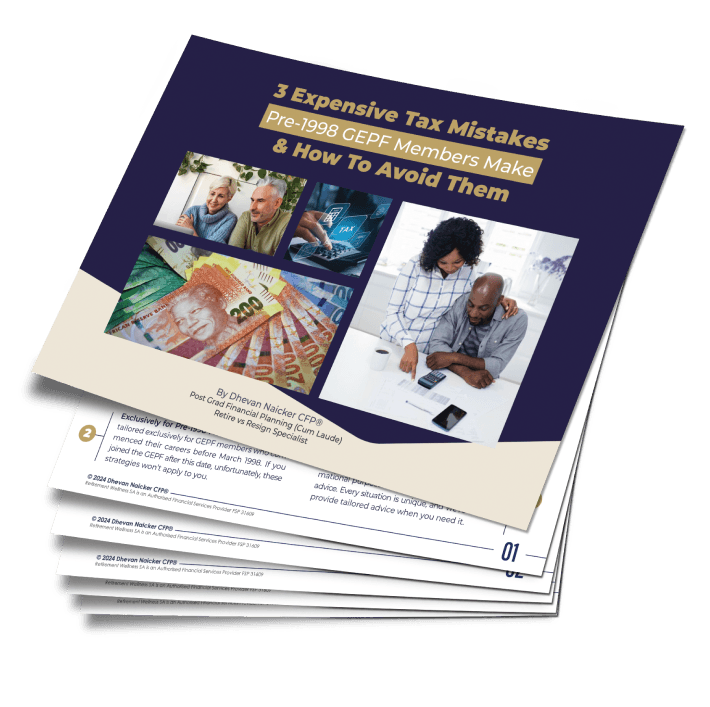Here’s What It Could Cost You
If you’re a South African government employee and you’re thinking about resigning or retiring within the next two years, pause before making any moves. A potential formula change could drastically affect your pension payout—and if history repeats itself, it might cost you thousands.
I’m Dhevan Naicker, your retirement specialist, and in this blog I’ll walk you through:
- What a pension formula change is
- Why it happens
- How to check if you’ve already lost money
- How it could affect you going forward
- What steps to take if you’re considering exiting soon

Why Does the Pension Fund Review Its Formula?
The pension fund is a shared pool of resources meant to pay:
- Government employees (like you)
- Pensioners
- Spouses of deceased members
To keep the fund healthy and ensure that it doesn’t run out of money, the trustees review the actuarial formula every three years. This formula determines your:
- Resignation benefit
- Gratuity (lump sum)
- Monthly pension
When the fund’s financial health is in question, adjustments are made—usually downward.
Past Review Dates:
- March 2018
- March 2021
- March 2024 (latest)
What Happened After the 2021 Review?
A major change occurred in November 2022, but the notice was only released three working days before the adjustment took effect. This left many members blindsided.
Timeline Example:
- 26 October 2022: Notice of change
- 1 November 2022: Formula change becomes effective
Many members reported significant losses—up to hundreds of thousands of rand—in their resignation benefit. And the recovery time? 18 to 24 months just to regain the value lost.
Could This Happen Again in 2025?
Possibly. The most recent actuarial review was completed in March 2024. A report was quietly published in May 2025, but it doesn’t confirm or deny whether a change is coming.
If a change happens between August and November 2025, as it has in the past, members resigning shortly afterward could suffer losses.
How to Check If You Lost Money in the Past Formula Change
Step-by-Step:
- Request your pension statements for:
- 31 October 2022
- 30 November 2022
- Compare the resignation value on both statements:
- Subtract November’s value from October’s
- The difference is your loss
- To assess recovery:
- Request your statement for 31 October 2023 and 31 October 2024
- Compare to see how long it took for your resignation value to return to pre-change levels
Why Timing Matters
If it took you two years to recover last time, and you’re planning to leave within the next two years, a similar drop could hit you hard again—and you won’t have enough time to recover.
Keep in Mind:
- Submitting your resignation before the formula change isn’t enough.
- Your official exit date determines which formula applies.
If your exit date is even one day after the new formula takes effect, you’ll be subject to the new, potentially lower benefit.
Should You Exit Early?
For members planning to resign (not retire) soon, it may be worth evaluating whether an early exit will protect your benefit.
Retiring members are less affected since their values are forward-calculated to age 60 or 65.
Final Advice
If you’re planning to leave in the next two years, don’t wait until it’s too late. A formula change could mean losing a portion of your hard-earned pension.
What You Should Do:
- Get your latest pension statement
- Run the resignation value comparisons
- Book a one-on-one consultation for help interpreting your numbers and identifying the best move
You’ve worked too hard to leave money on the table.
Disclaimers:
- Retirement Wellness SA is an Authorised Financial Services Provider (FSP 31609). This article provides information, not direct advice.
This information is not provided by or on behalf of the Government Employees Pension Fund (GEPF). We do not act on behalf of the GEPF.

